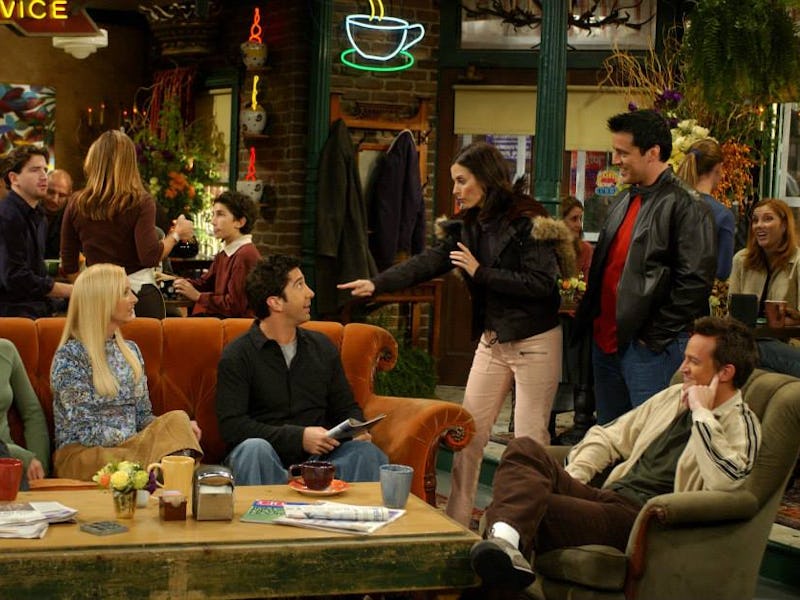Scientists Explain Why You Can't Stop Going Back to the Same Places
You can only have so many favorite hangouts.

In the world of Friends, the 8 million-person metropolis of New York City feels pretty small. There’s Monica’s apartment, Central Perk, sometimes there’s Joey’s apartment, and there’s that time they went to Pottery Barn. But according to a new study in Nature Human Behavior, the idea that a gang of pals would stick to just a small number of places isn’t just a sitcom trope — it’s the way we live in real life as well.
That’s not to say that the places we visit don’t ever change: More specifically, it’s that the number of places don’t change. In the study, released in mid-July, a team of mathematicians explains why, even if there are always new bars or restaurants you and your pals want to check out, you’ll always return to a maximum of 25 places at any given time.
That means that when you widen your geographic circle to include a new hot spot, subconsciously or not, a former favorite that you once loved gets booted off the list. The researchers found that this pattern — which they say is driven by a combination of human laziness and curiosity — holds true even when they open up the data set and include the places people visit on vacation.
“Our study shows that, while these places may change as our needs and circumstances evolve, their number does not,” co-author and City, University of London researcher Laura Alessandretti, Ph.D. explains to Inverse. “When a place makes it to the set of one’s ‘favorite locations’ another place is abandoned — this result does not depend on how we define what is a ‘favorite location.’”
On 'New Girl" the gang either hangs out at their loft or Nick's bar.
Alessandretti and her team analyzed data on the frequently visted locations of 1,000 university students participating as study subjects and on 40,000 people who participated in a longitudinal experiment called the Copenhagen Networks Study. Analyzing the locations that the participants consistently visited over two years, the researchers discovered that on average people stuck to 25 places. These “favorite locations” were those that were visited at least twice, and for more than 10 minutes a week on average, within a time frame of 20 weeks.
These stops were people’s offices, their favorite bars, bus stops and subway stations — any physical location where people found themselves in the course of life. Alessandretti says their findings are in line with previous research in the 1990s by evolutionary anthropologist Robin Dunbar. He proposed that the maximum number of relationships humans can maintain is 150 people, arguing that this constraint stems from the limits of human cognition.
Alessandretti thinks the phenomenon she observed has similarly cognitive underpinnings. Because her team’s findings are consistent across cultures, ages, and genders, she says, “this limit is deeply rooted in human nature.” Better understanding the routines and mobility patterns of individuals can be a tool for researchers studying human movement on a large scale — those who attempt to forecast migration, predict epidemics, and design transportation systems.
“Mobility is a key aspect of human life to which we allocate significant time and energy,” says Alessandretti. “Our results show that there are universalities in the way that we balance the trade-off between the exploitation of familiar places and the exploration of new opportunities.”